French Press and Moka Pots are both accessible options for crafting a coffee meant to be sipped and savored. Both brewing methods toss American convenience to the wind and beg you to slow down and prepare yourself a drink with intention.
One steeps coffee for a light, tea-like experience full of fruity nuance and flair. The other uses pressure and percolation to brew a robust espresso-like coffee without the bulky and expensive machine.
In this article, we’ll explore the backgrounds, uses, and best practices for the French Press and Moka Pot.
By the end, you’ll be equipped with the know-how to brew the best cup of joe with either method!
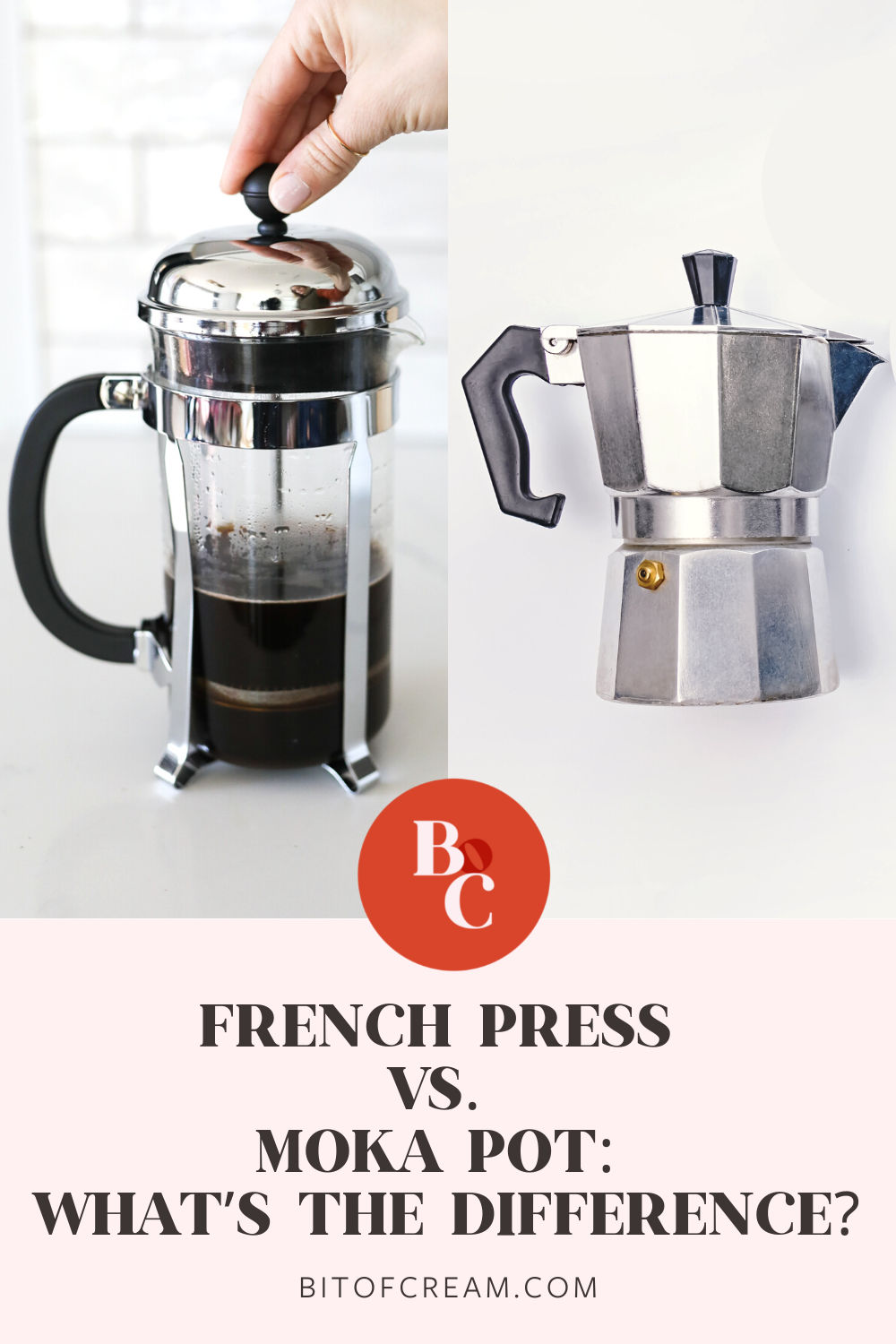
This post includes affiliate links.
What is French Press coffee?
Using the French Press method for brewing coffee dates all the way back to 1929 Italy. The coffee made with this brewing method is so delicious that not much has changed since that first patent for the French Press.
A French Press comprises a glass carafe caged in a metal or plastic frame with a handle. On top of the brewing vessel is a plunger-filter attachment.
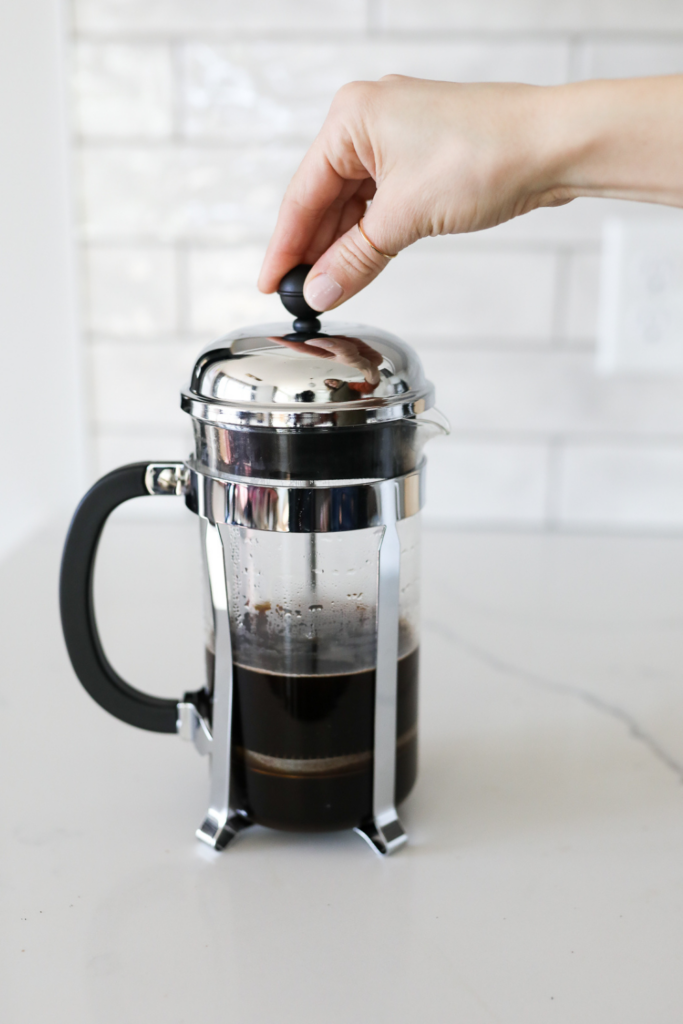
When brewing, that filter sits at the top of the carafe as the coffee mingles and steeps with hot water. Then, once the coffee is brewed, you press the strainer attachment through the liquid to the bottom of the French Press.
It’ll trap the floating coffee and stop the brewing process so you can pour mostly sediment-free coffee into your mug to enjoy.
It’s essential to use coarse ground coffee so the grinds can adequately steep in near-boiling water for 3-5 minutes. Pour the grinds into the bottom of the carafe and cover them with hot water. Then stir to ensure all the grounds come into contact with the water for even extraction.
Once the coffee has steeped, press the grounds to the bottom of the carafe and serve.
The ease of use gives anyone the opportunity to craft the perfect cup of joe. Plus, the steps are easily repeatable for consistent coffee every time.
Aside from this brewing method being easy and consistent, another significant benefit of using a French Press is the taste.
Since there isn’t a paper filter between the grinds and the water, more of the coffee bean’s oils make it into the brew. This means a rich, complex coffee that allows you to taste the difference between roasts and origins.
What is Moka Pot coffee?
The Moka Pot also originated in Italy around 1933 but quickly became a beloved brewing method by Cubans.
After Italian espresso machines arrived on the island of Cuba, the people adopted the Moka Pot to brew their rich coffee. The stovetop device was a much more affordable and accessible way to brew strong Cuban coffee. The Moka Pot was recoined cafetera or cafectio and was used to serve up traditional Cuban colada or cafe con leche.
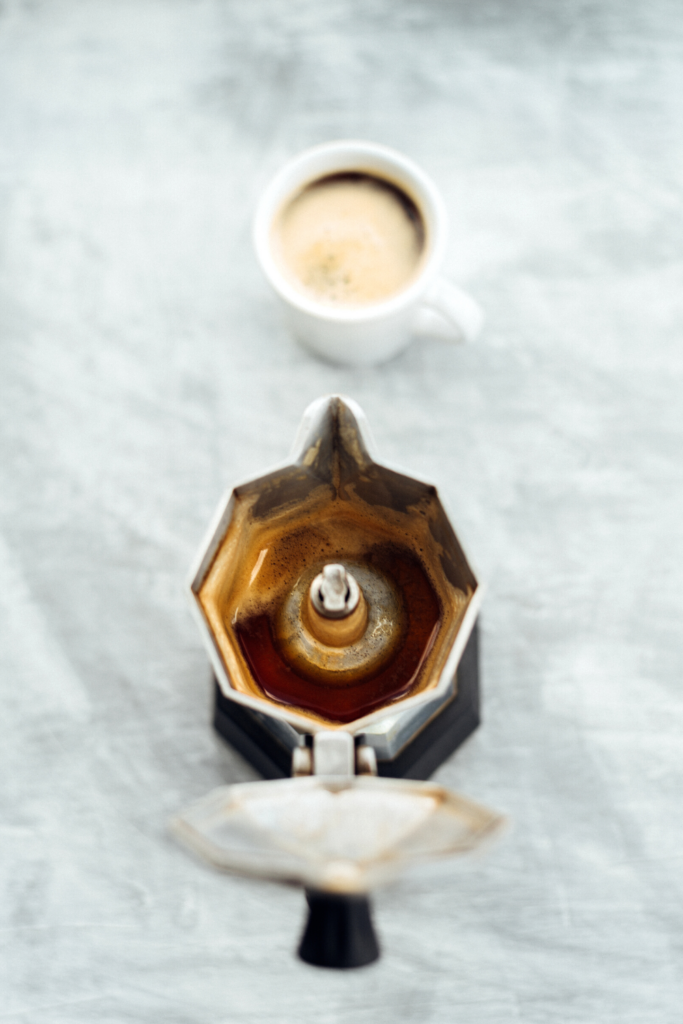
A Moka Pot is a simple yet ingenious percolating coffee maker that’s used right on your stovetop. There’s also electric versions that’s available.
Water is heated from the flame on your stovetop. This creates pressure and allows the water to pass upward through the coffee grounds to make robust and full-bodied coffee.
Coffee from a Moka Pot is about as close as you can get to espresso without an espresso machine. It uses a medium-fine grind, coarser than the ultra-fine espresso grind, but delivers a similarly deep coffee.
As a result, it’s highly caffeinated, rich, and full of flavor. Much of this comes from residual oils passed through direct contact between the ground beans and hot water.
Start by filling the bottom reservoir with hot water. If you begin with cold water, the grounds will overheat, creating a burnt, metallic taste in the coffee.
Once you’ve filled the reservoir, insert the filter basket into the bottom of the chamber and fill it with coffee grinds. There’s no need to tamp down the coffee, just level it off and screw all the components together.
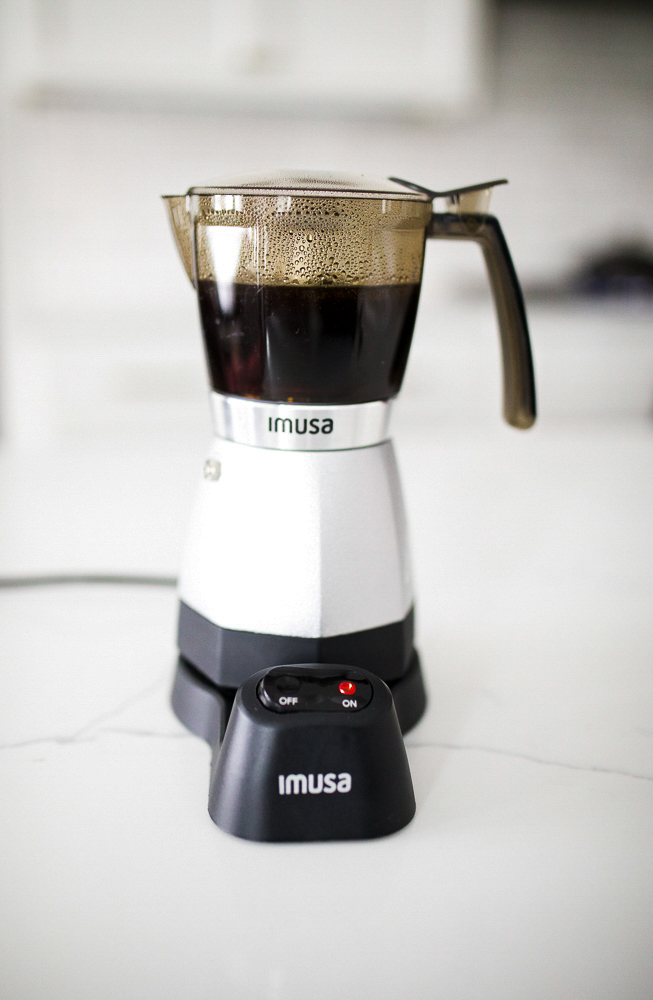
Leave the lid open and place the Moka Pot on a gas stove top over medium-high heat. As the water boils, pressure will build up and force the water through the coffee grinds. You’ll see the top of the Moka Pot begin to fill with fragrant hot coffee. Once the spout starts to sputter, you can remove the pot from the heat and serve.
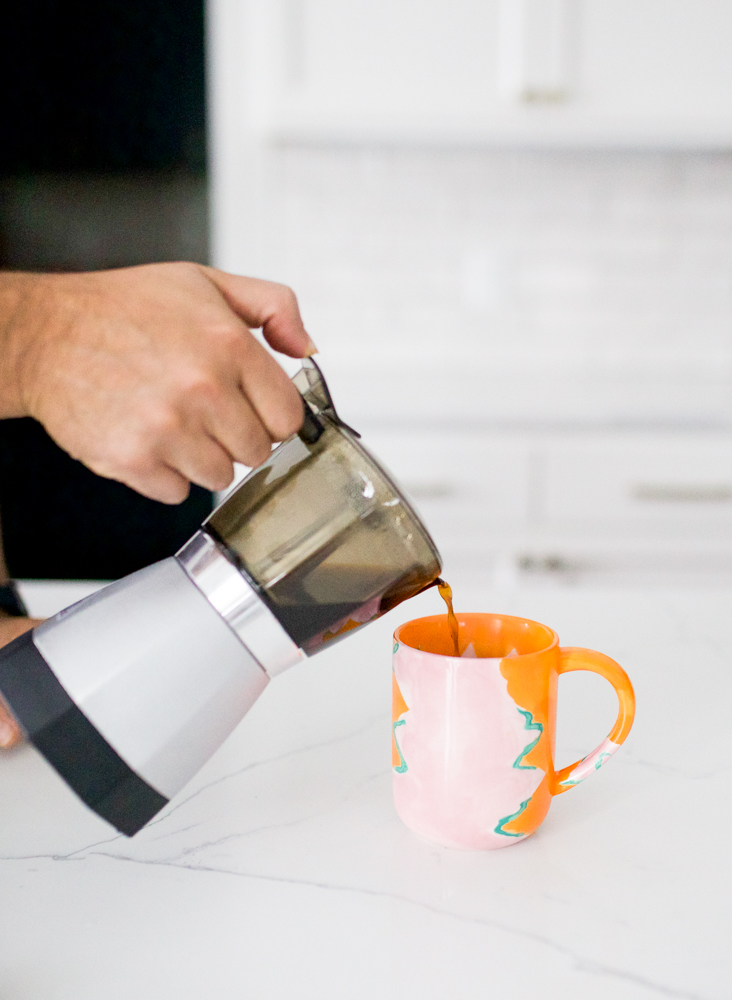
It will take some practice to make the perfect cup of Moka Pot coffee. However, once you succeed, it’ll make that cup of coffee all the more delicious.
If you need a lot of caffeine or love the taste of espresso, the Moka Pot is for you. It’s a much more affordable and accessible option than splurging on an espresso machine.
Since the Moka Pot is known as the stovetop espresso maker, it’s best paired with medium-dark roasts that you’d usually use for espresso. The coffee will be rich, intense, and delicious with some sugar and cream.
Differences between French Press and Moka Pot
Taste
It’s always best to grind your beans before brewing a coffee for the freshest, most delectable flavor. When we look at our two brewing methods, French Press coffee will be lighter and more nuanced than Moka Pot’s strong and rich flavor.
The French Press brewing method is better suited for light and medium roasts where you can taste the fruity, floral flavors in the coffee. However, if you prefer your coffee with milk and sugar, you can use medium-dark roasts to stand up to the sweet, creamy flavors.
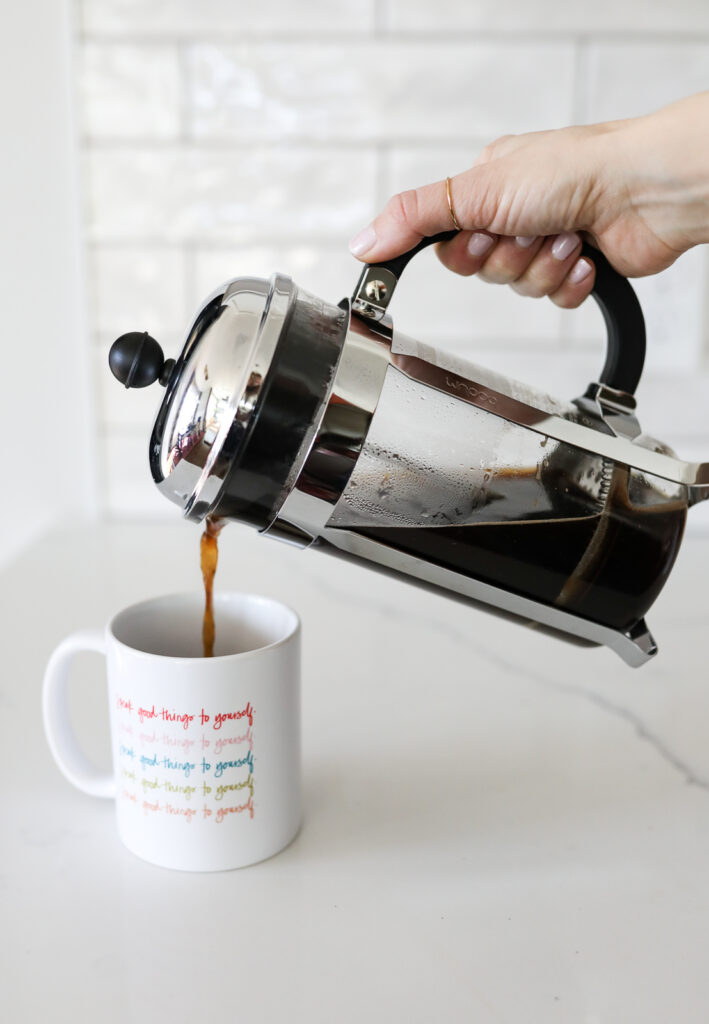
A Moka Pot will brew a full-bodied and ultra-robust coffee reminiscent of espresso. Some coffees are marketed specifically toward use with a Moka Pot. Often, these will be rich, chocolatey flavors that pair well with added sweetener and dairy.
Appearance & Mouthfeel
With both a French Press and Moka Pot, the coffee grinds don’t pass through a fine paper filter. This means the oils from the beans are passed to the coffee itself, leaving a heavy, rich mouthfeel.
French Press coffee will be lighter in color than Moka Pot coffee. Plus, if the filter doesn’t quite catch every coffee ground, it might have some gritty sediment that’ll settle at the bottom of your cup.
Alternatively, the Moka Pot will have the same heavy mouthfeel but with a deeper color.
Volume
There are many sizes of French Press available to suit your coffee needs. For example, you could purchase an 8oz, 16oz, 23oz, or 36oz press to caffeinate yourself or multiple drinkers.
Moka Pots come in many sizes, holding between 3 – 12 cups of coffee by volume.
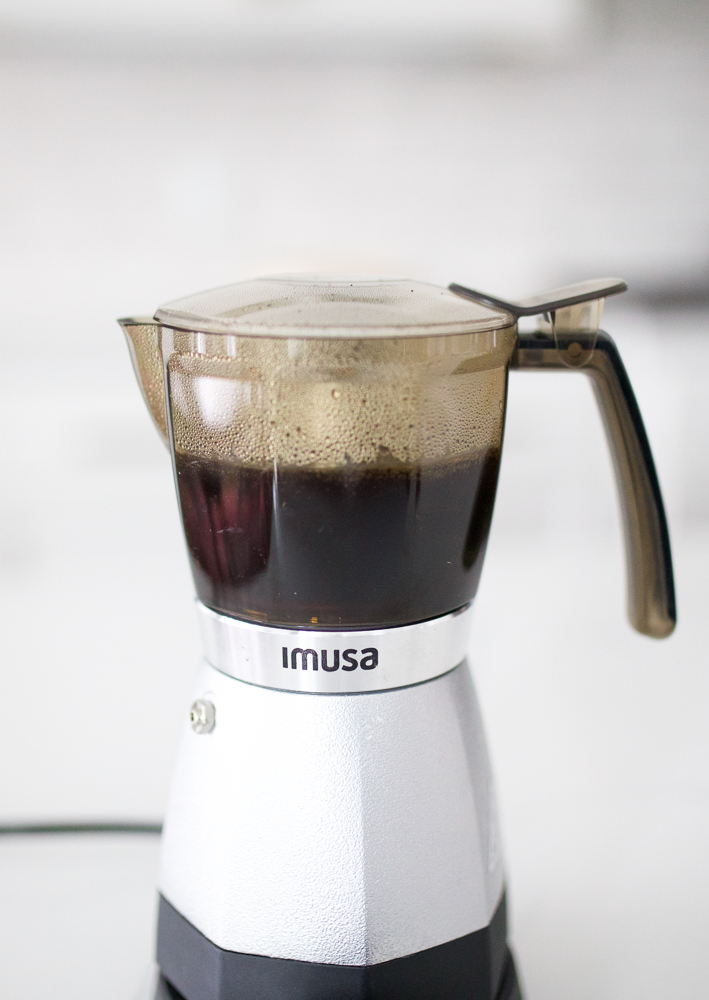
For both of these devices, you can purchase one that brews the perfect amount of coffee for your daily needs.
Brew Time
Both the French Press and Moka Pot are comparable when it comes to brew time.
It takes a French Press about 3-5 minutes to fully steep. In comparison, it takes the Moka Pot 5-7 minutes to pressurize.
This might be a nominal difference, but some people need their caffeine fix within a few minutes of waking up. No judgment here!
Effort
A French Press is much easier to get the hang of than a Moka Pot. Since a French Press relies on steeping, you only need to worry about grind size and the coffee-to-water ratio.

Once you do the math and figure out how this applies to your specific French Press, the process becomes a no-brainer. Seriously, anyone can make a good cup of coffee with this device.
On the other hand, with a Moka Pot, you run the risk of over-extracting the coffee. This will result in a bitter, burnt flavor. Some would consider the Moka Pot brewing method as temperamental or finicky, but once you get it down, you’ll have a cup of coffee that’s hard to match.
It’ll take some practice and trial-and-error to nail using a Moka Pot, but like with a French Press, once you get a feel for how to do it, it’ll become second nature.
Ability to Fine Tune
A French Press is pretty limited as to what you can create. Its best attribute is its dependability and consistency, not versatility.
With a Moka Pot, you control your coffee’s temperature and the grind size. If you want to limit these variables, go for an electric Moka Pot with a temperature regulator. Then, you just plug it in like an electric tea kettle and only have to worry about nailing the grind size.
Dose Ratio
For a delicious French Press coffee, follow a 1:12 ratio of coarse ground coffee to water by weight to achieve a rich, robust, and full-bodied cup.
Coffee from a Moka Pot is closer to espresso than French Press coffee. You’ll follow a 1:7 ratio of medium-fine ground coffee to water by weight for a strong, dark, and complex flavor.

Using a scale to weigh your coffee grinds is always best for the most consistent brews. However, if you don’t have a scale, you can use this chart to determine how to convert coffee measurements from weight to volume. Then you can measure by volume using whatever measuring scoops you have on hand.
Cost
The components of a French Press aren’t fancy, so it’s easy to find one that can fit any budget. You can purchase one for as little as $15 online or from any big box or department store. I always run into them while thrifting, so keep your eyes peeled, and chances are you can snag French Press for just a few bucks.
On the other hand, a Moka Pot is a bit more expensive. On average, they range from $35 to $50 for manual options and $60+ for electric models. If you’re a beginner looking to dabble in brewing methods to find your favorite, you can find less expensive Moka Pots online.
However, cheaper versions use aluminum instead of steel. This means the porous metal can leach into your coffee time. It’s not recommended to clean these brewers with soap or abrasive sponges. So lower-quality Moka Pots won’t last you as long as ones made from stainless steel.
Clean-up
To clean a French Press, you’ll need to remove the plunger and toss away the spent grounds. Then, rinse out the glass carafe and tackle cleaning the layers of the mesh filter. For some presses, it’s necessary to completely disassemble and reassemble the filter each time to ensure a clean filter.
Since a Moka Pot brews coffee by building up pressure, you must keep the device clean for your safety.
A safety valve built into Moka Pots releases excess pressure via steam. As long as you disassemble and clean the pot after every use, you won’t have coffee grounds or hard water deposits clogging the safety valve.
Once the used Moka Pot cools, you can disassemble it, remove the filter basket, and toss away the spent grounds. Then, rinse and dry each piece of the device. Don’t use soap, don’t scrub the metal, and definitely don’t put it in the dishwasher.
Make sure each piece is completely dry before reassembling, and you’ll have delicious (and safe) coffee every morning.
Since the pieces of a Moka Pot don’t have as many coils and strainer layers as a French Press, they’re easier to rinse and clean thoroughly.
FAQ
Due to the temperature and extraction methods, Moka Pot coffee will have more caffeine and a stronger flavor than French Press coffee.
Technically, you won’t be making espresso in a Moka Pot. However, the coffee you get will be the closest you can get to espresso without using an espresso machine. You’ll use a coarser grind than an espresso grind, but you’ll achieve a similarly strong, dark, complex flavor.
It’s normal to find leftover liquid in the bottom of your Moka Pot after brewing. Since the funnel doesn’t touch the very bottom of the pot, some water will be left behind. Otherwise, the device wouldn’t be able to pressurize. So it’s not wasted coffee down there, but a tiny bit of leftover water.
Want more moka pot and french press related fun? Check out one of these:

Great article!